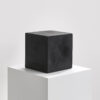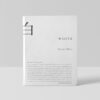In this new interview series, I explore aesthetics in conversation with inspiring personalities from the fields of architecture, design, and art. My guests discuss what they consider aesthetic, and how their perception impacts both their own experience and the experience of those who view or use their work. Let’s start this series with Jonas Bjerre-Poulsen.
Jonas Bjerre-Poulsen is a Danish architect, art director, and photographer who is known for his simple and minimalist design language. He studied at the Royal Danish Academy of Fine Arts and later founded Norm Architects with fellow architect Kasper Rønn. Norm Architects has designed a number of successful projects that focus on simplicity and soft minimalism.
In addition to his architectural work, Bjerre-Poulsen is also a talented photographer. His photographs often feature simple, geometric compositions, exploring the balance between richness and restraint, between order and complexity. His work has been exhibited internationally and has won numerous awards.
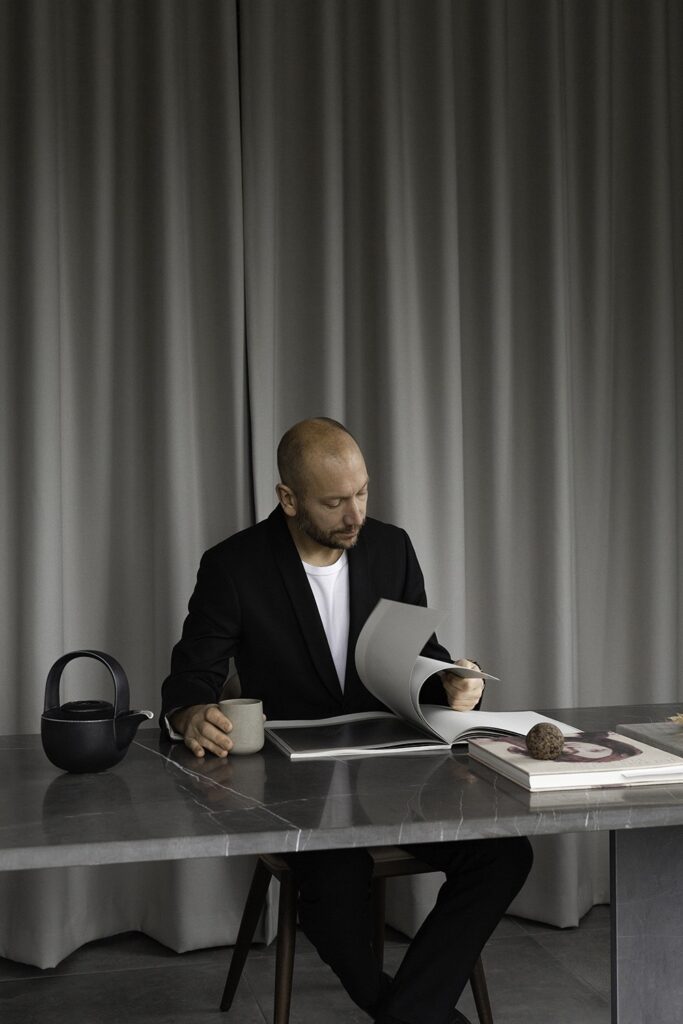
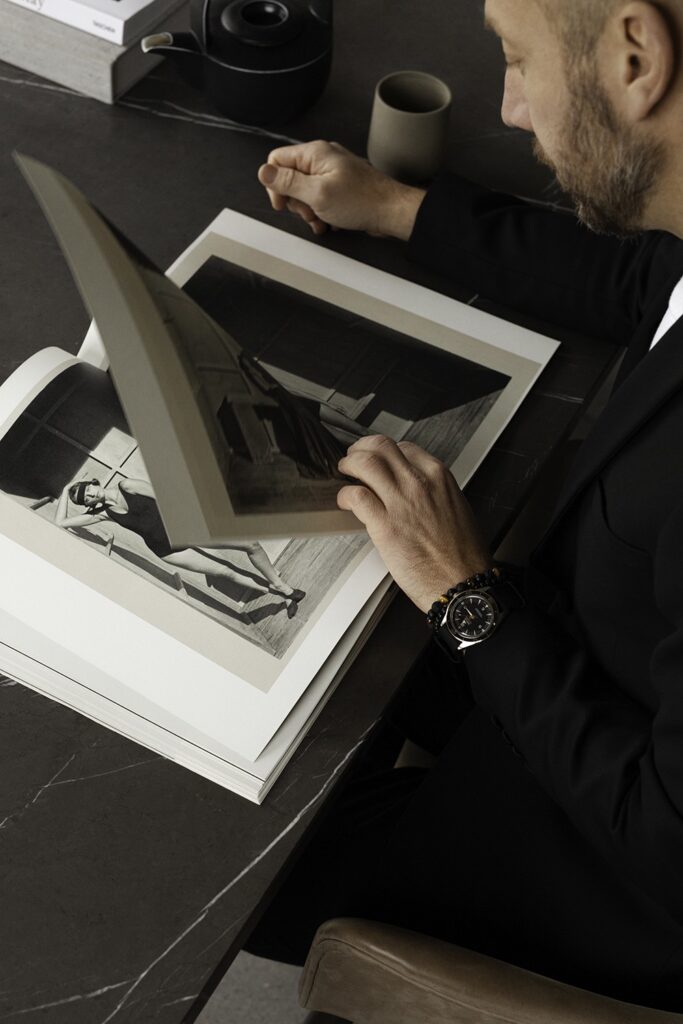
As many readers know you are an architect, art director, and photographer mostly known for co-founding Norm Architects – but what interests me, even more, is what is the most rewarding aspect of what you do every day? How much of your personality is reflected in your work?
Jonas Bjerre-Poulsen: I have never considered my creative work as work, really. It feels more like a vocation, a passion, or an inner urge. Before becoming an architect, I was trained in business strategy and marketing at Copenhagen Business School. But I guess it was my love for creating things that made me change paths. I took a sabbatical from my business studies and spent a year in Rome painting and photographing before applying for architecture school.
I have since the beginning of my career tried to fuse my hobbies with something I could live off, so I don´t have to divide my world into work and life, but only spend my time on things that feel right.
I can be quite lazy if I have to work with things that feel like work, but I can go on forever if I am doing something I am passionate about. I guess I would be doing the same things I am doing today, also if it was only for myself, and in that way, my creative work in both design, architecture, and photography is very much an extension of myself.
Aesthetics is a sensual and social exercise—to create a framework for essential human needs of safety, identity, belonging and purpose.
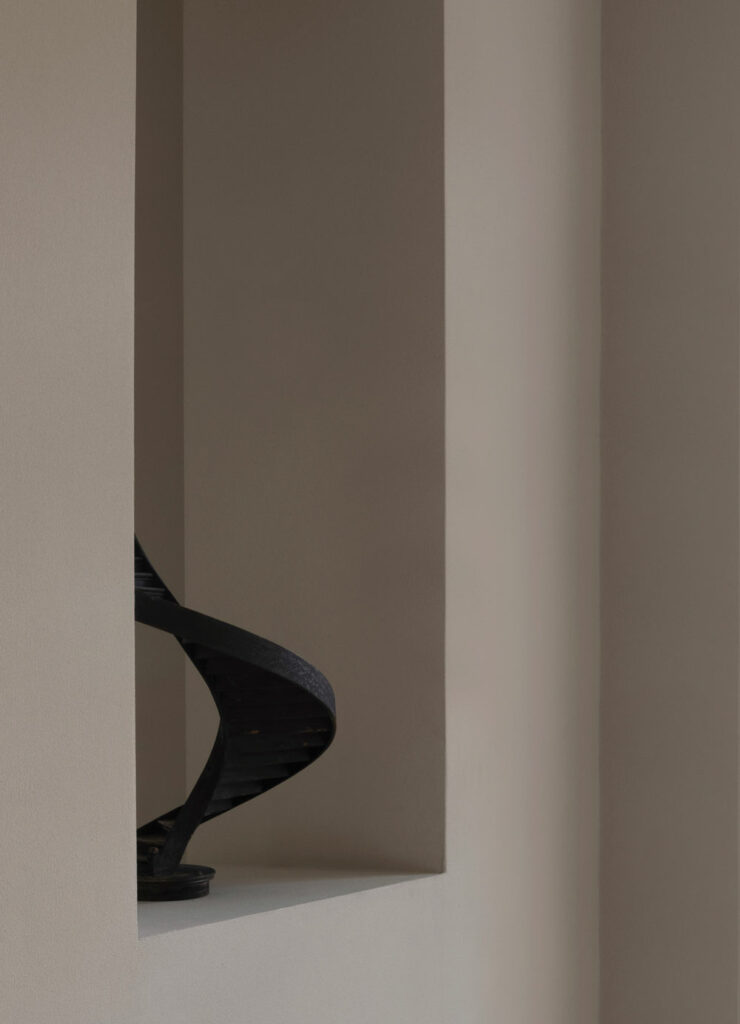
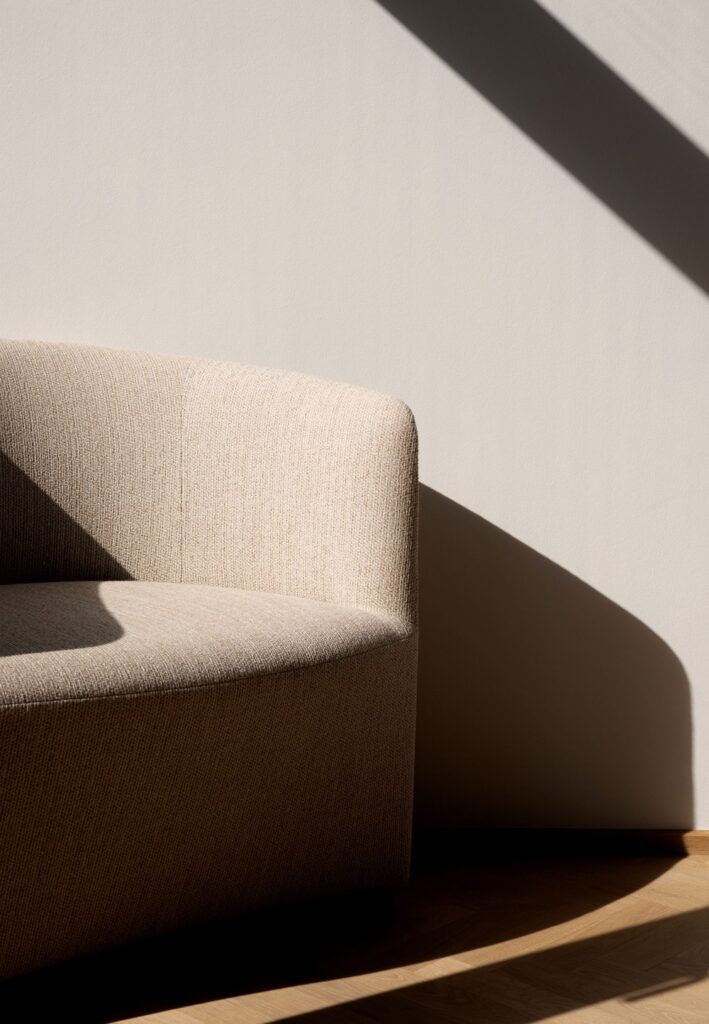
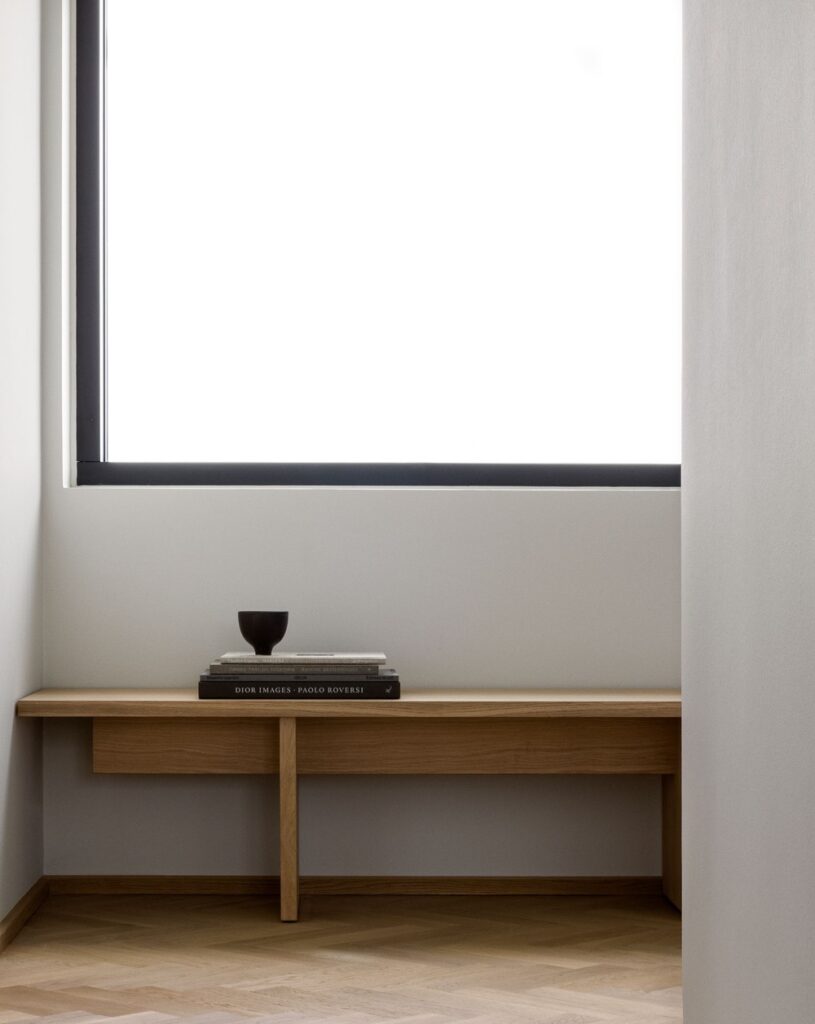
What do you perceive as aesthetic and when was the last time you considered something aesthetic?
Jonas Bjerre-Poulsen: Aesthetics is not about surface, beauty, taste or fashion. Aesthetics is deeply rooted in functionality, biology, and evolutionary psychology. Our experience of everyday life is largely dependent on the manmade structures, architecture, materials, and objects that form our modern habitat.
The story of our lives unfolds between the walls of home—our place of sanctuary—at our work desks, restaurant tables, and within the greater infrastructure of the city. Just like the weather, the atmosphere of the built environment has a profound effect on how we rest, think, feel, work, eat and socialize.
Spaces and objects must certainly be functional but if they are to truly serve us, they must also attend to our bodies and emotions. Aesthetics is a sensual and social exercise—to create a framework for essential human needs of safety, identity, belonging, and purpose.


Is there something that you find aesthetically pleasing, but most people don’t?
Jonas Bjerre-Poulsen: There might be many things I consider to be aesthetically pleasing that people would write off as being ordinary or bland. I cannot take two steps outside without zooming in on elements that please me or the opposite. I am very sensitive to my surroundings. In my practice as a designer, I try to find the elements that transcend cultural preferences and appeal to our psyche on a biological level as human species. I find that to be much more interesting than acquired tastes in niches of fashion.
When you photograph, there are different areas – on the one hand, you capture Norm Architect’s designs and on the other hand, you shoot beautiful, minimalist photo series like “The Reinvention Of Forms”. Let’s go on a little thought experiment: Would you still take photographs if you knew no one would ever see your images? If so, how would your work change?
Jonas Bjerre-Poulsen: Photography started for me as something I only did for myself. I loved the process of discovery, and I used the camera to study the world. Much like a landscape painter observing nature or a croquis artist understanding the human anatomy, I have always used the lens of a camera to study the world and I zoom in on what is relevant in order to understand the parts of the world and how they interact, rather than just feeling the collective atmosphere of the whole.
I do not only photograph our own work but have for many years also photographed the work of other architects and I always carry a camera in my bag or in my hand. I also love the process of image editing and that process is almost like meditation for me. It is a space without time where I feel completely relaxed and in a state of flow. The Reinvention of Forms came out of projects I had done for myself and images I had captured over the years. It was only in the process of the curation of images, that I could see a theme emerging.
I try to be very cautious about not accepting too many photography jobs for others as it is a creative realm, where I can work for myself without involving too many other people.
Photography started for me as something I only did for myself. I loved the process of discovery, and I used the camera to study the world.
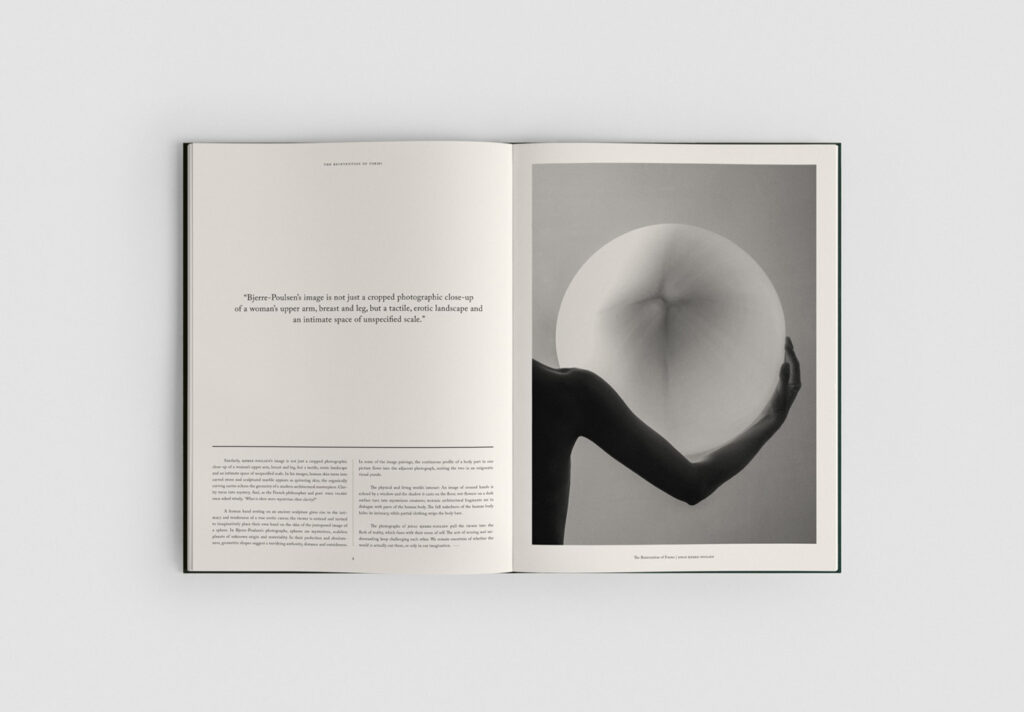
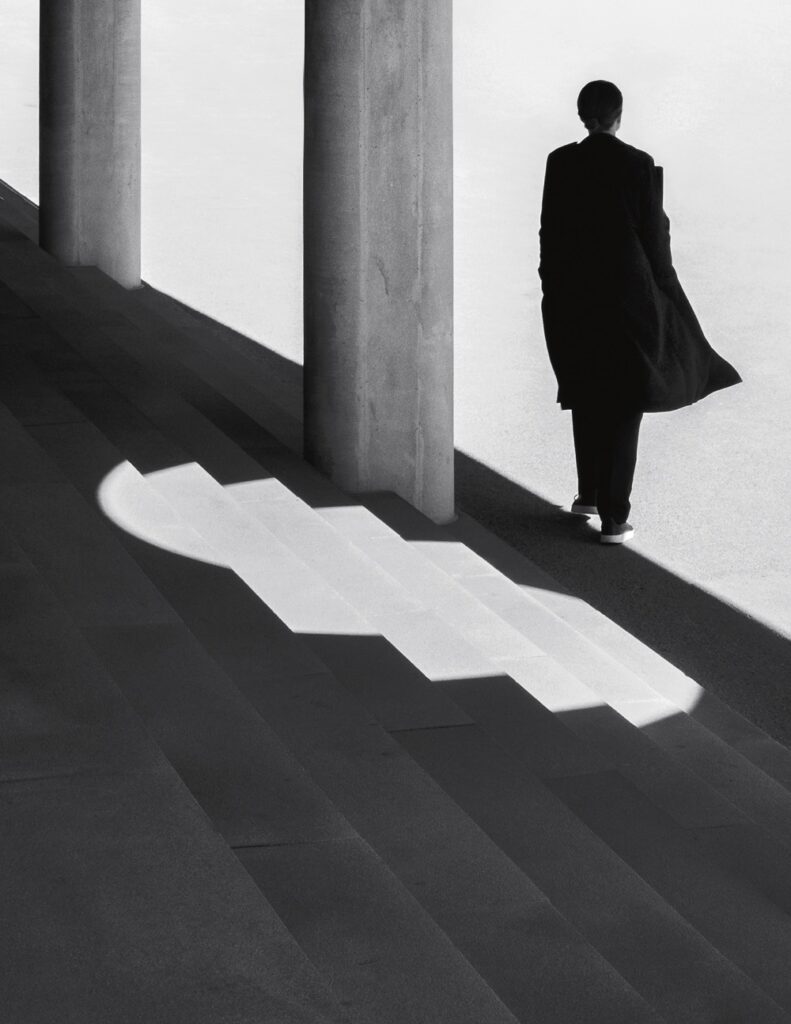
How do you define timeless aesthetics?
Jonas Bjerre-Poulsen: It is an imperative for good architecture and design to work with time, rather than against it. The created works must connect with their users and evolve with them, remaining relevant as time passes. Better yet, good design can help us connect with the passing of time itself—keeping us in synch with the days, seasons, and eras that make up our lives, keeping us simultaneously present and aware of the finite nature of existence.
Conversely, architecture, interiors and objects whose sole aim is to parade the ideas and styles of a brief, specific moment in time are less likely to remain relevant in the long term. Once their initial novelty has worn off, the trend-based design is in danger of becoming a relic. If a design should exist to serve its user—and to serve society overall—it is necessary to consider the culture of the day as well as the timeless needs of the human being.
What makes something art, in your opinion? Do you think art should be intentionless?
Jonas Bjerre-Poulsen: I think the discussion of what art is will be forever fluid and it is an impossible definition to make. But I like art that makes me wonder and sparks new thoughts in my mind. I think art can be both full of intention and work well. But it can just as well be completely selfless without any intention and still be very effective and meaningful.
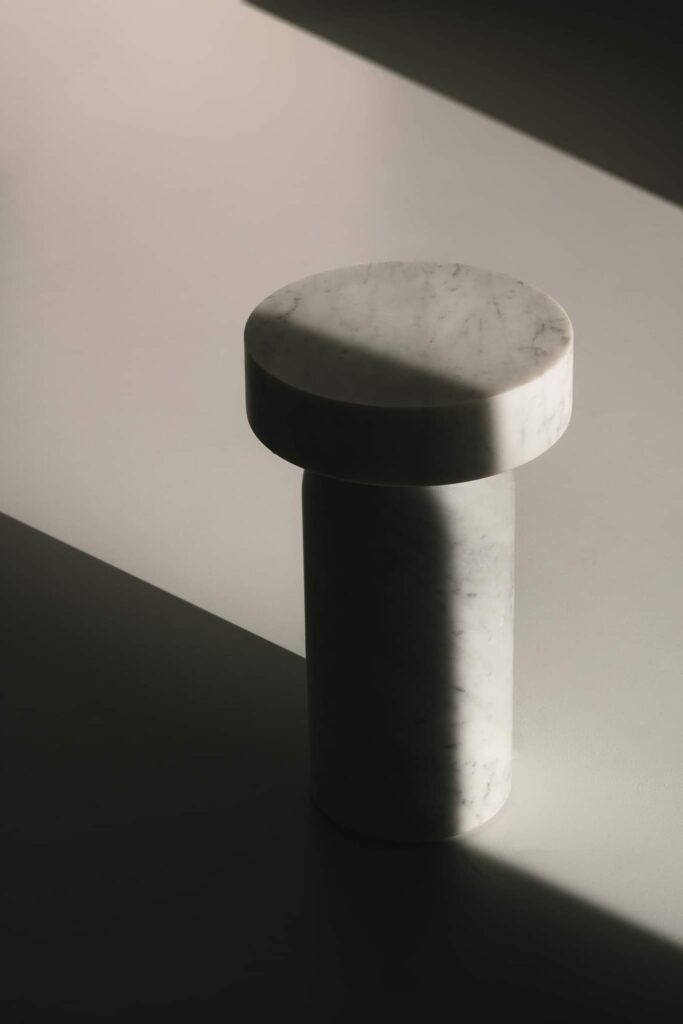
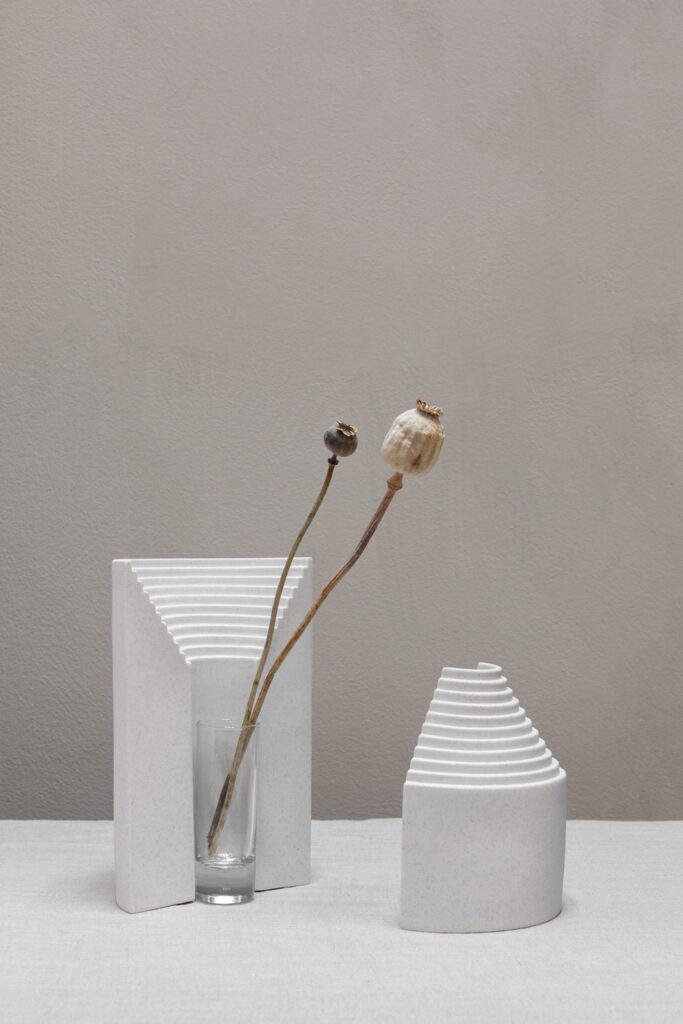
Do you think minimalist aesthetics are overdone in the creative world?
Jonas Bjerre-Poulsen: On the contrary. Living in a modern urban society often means living with constant noise: consumerist city streetscapes fill our view with layers of advertisements for objects of questionable value, while the digital space vies for our attention with endless streams of content and a cacophony of notifications. Life moves fast, and it accumulates complexity, things, and data along the way. Existing in this environment leaves us overstimulated, exhausted, and gasping for breath. We may recognize a correlation between growing material wealth, and a declining state of physical and mental health as we suffer from chronic cognitive fatigue.
Having arrived at this perhaps paradoxical junction, we seek ways to muffle the noise, declutter our vision and carve out corners of stillness. We find ourselves wishing to be freed from the weight of too many things and too much information; wishing to live only with what is essential for well-being. At this moment the question becomes selective and reductive: “What can I live without?”.
Whilst this realization can arrive at any point in life, the idea of minimalism or simplicity is far from modern or unique. Many ancient cultures across the globe have preached the notion that simplicity leads to inner peace and contentedness—that the human mind needs quiet to focus on what is truly meaningful and joyful. In the highly developed metropolises of today, this idea feels out of reach.
